Abstract
Effects of chronic lead intoxication on cellular proliferation in rat kidneys were investigated by autoradiography. The rats were given intraperitoneal injections of lead acetate in aqueous solution for 6 months. At the end of this period, the proliferative activity of proximal tubular epithelial cells was about 15 times greater in rats given lead than in untreated controls. In the leaded rats approximately 40% of the proximal tubular cells contained intranuclear inclusions, approximately 0.5% of proximal tubular epithelial cells were labeled and approximately 6% of labeled cells contained intranuclear inclusions. Thus, cells with intranuclear inclusions can replicate DNA. Effects of chronic lead poisoning on the replication of proximal tubular cells in rats subjected to left uninephretomy before inception of treatment with lead were substantially the same. No renal carcinomas were found after 6 months of treatment with lead, but there was epithelial hyperplasia in some proximal tubules, with occasional atypia. The presence of increased synthesis of DNA and epithelial hyperplasia in the kidneys of rats chronically poisoned with lead suggests that the renal carcinogenicity of lead, observed by others, is related to lead-induced stimulation of renal cell proliferation.
Full text
PDF

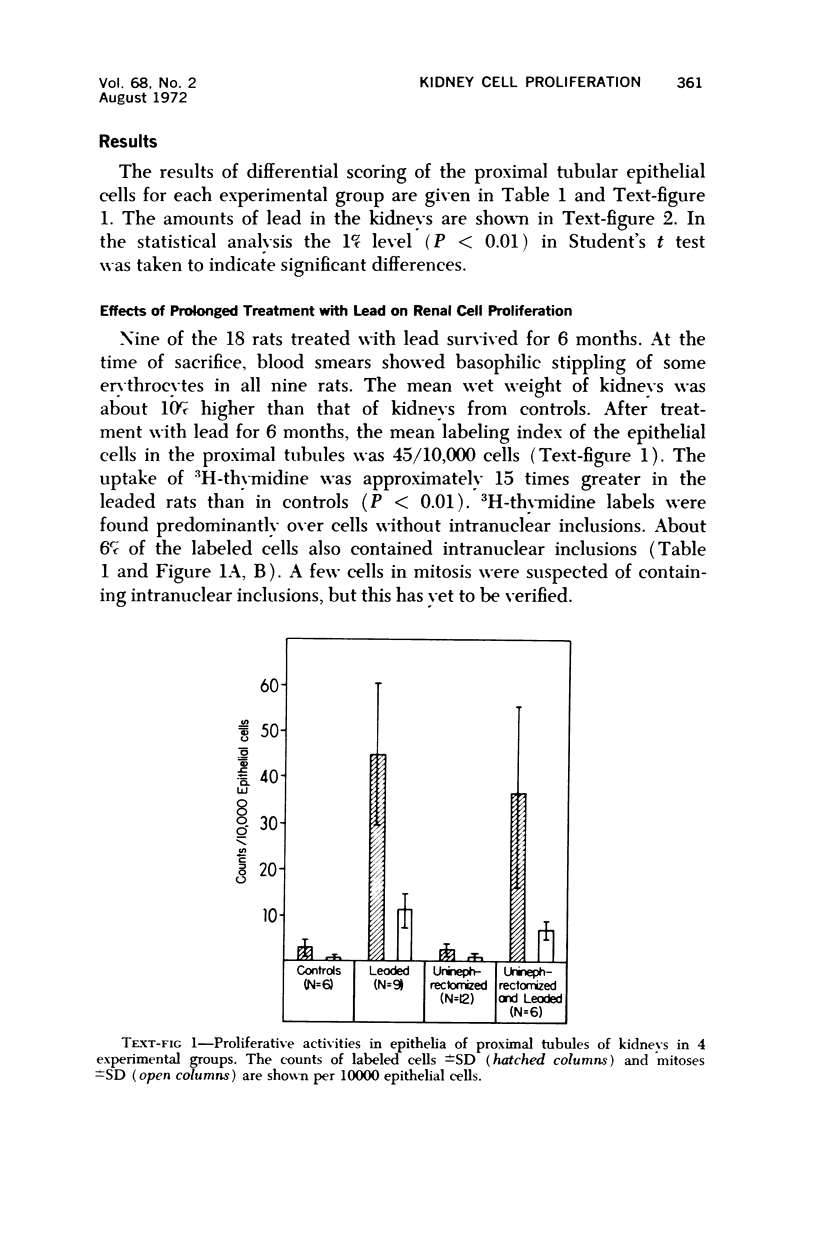

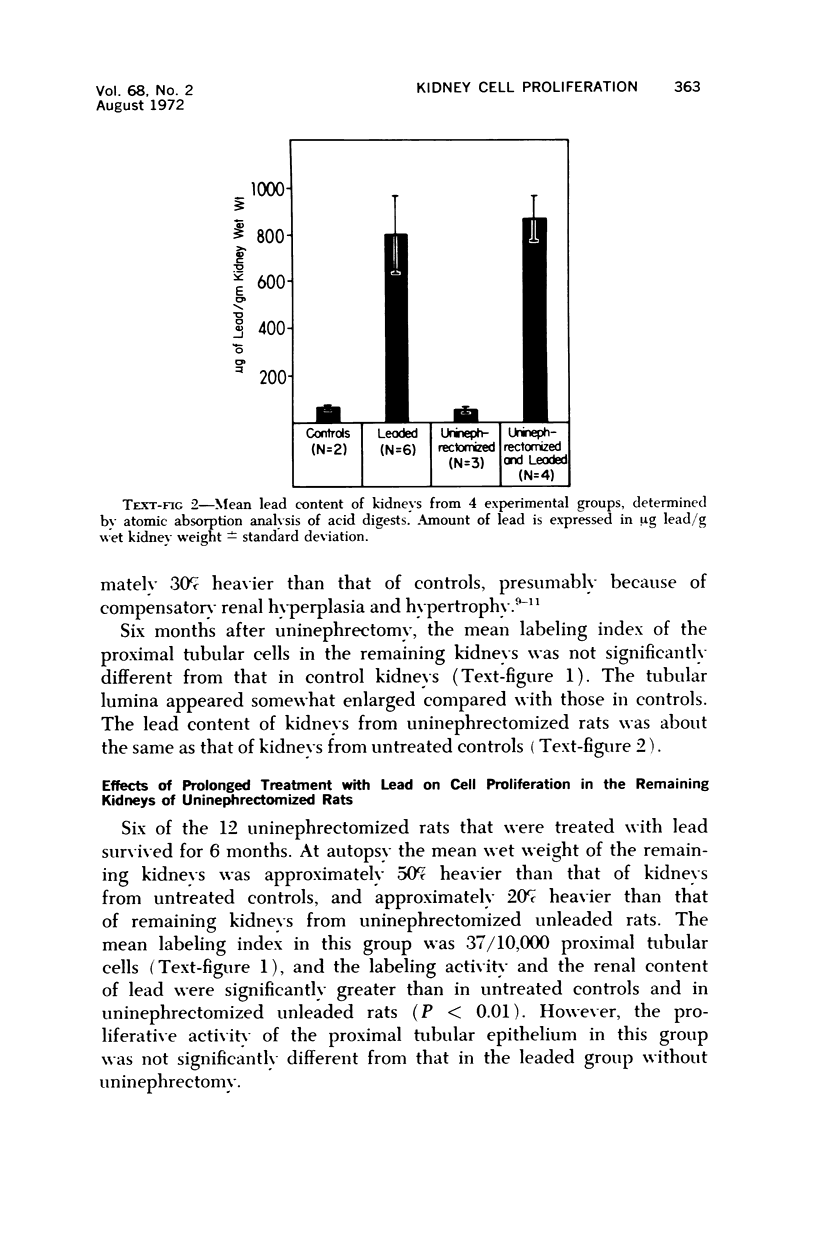

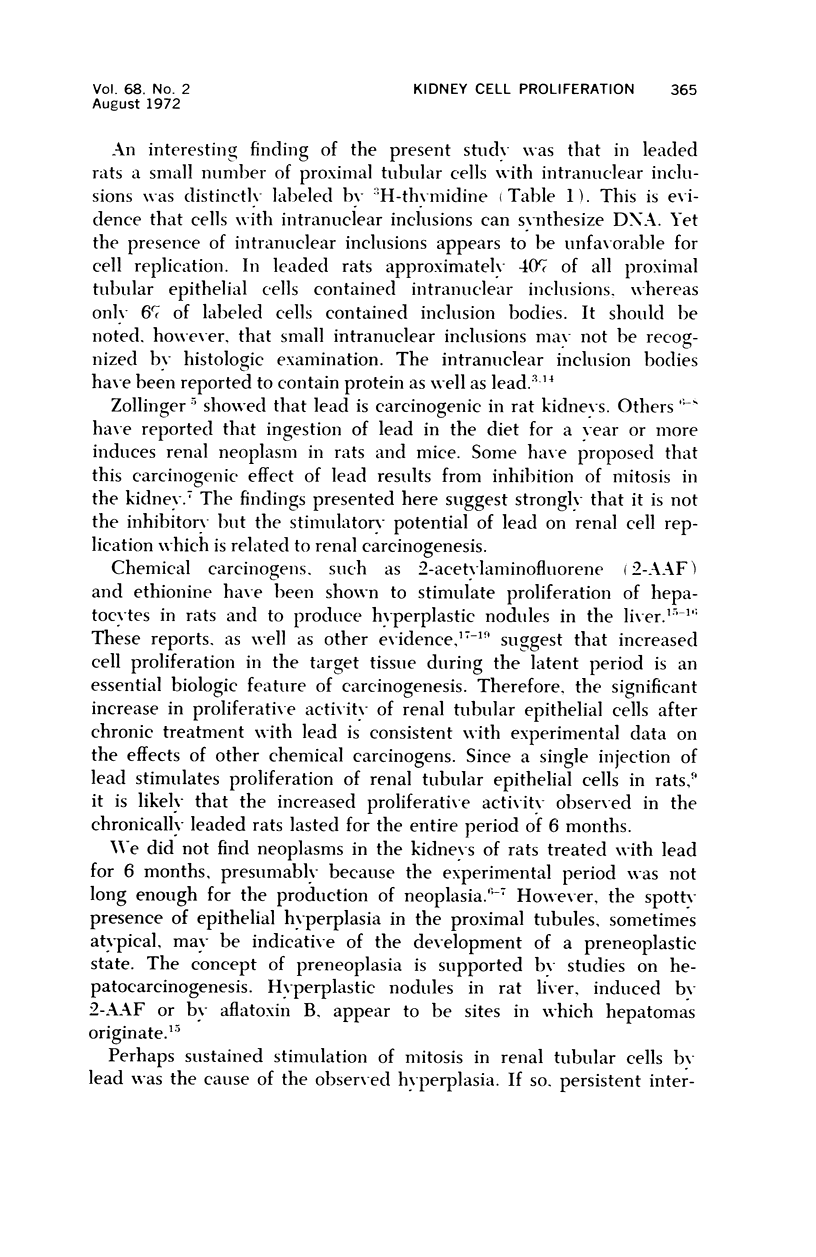

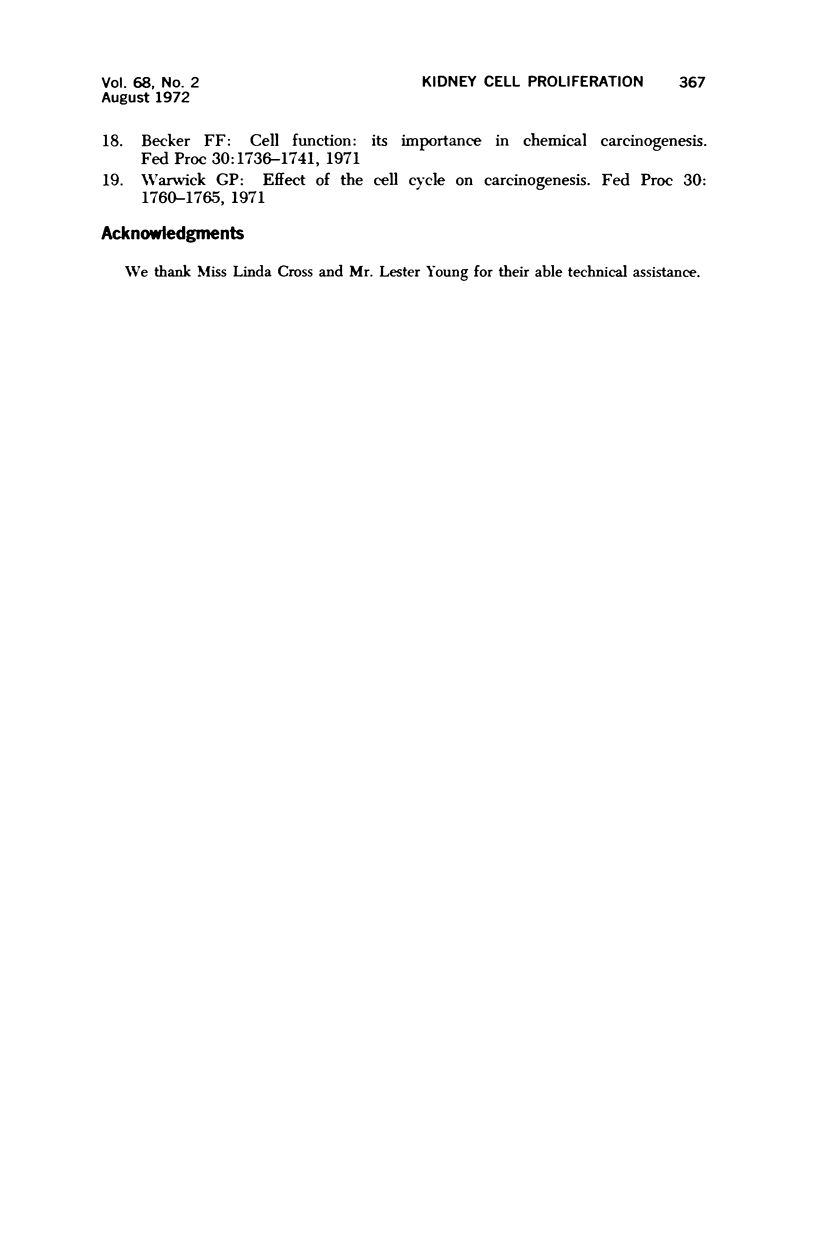
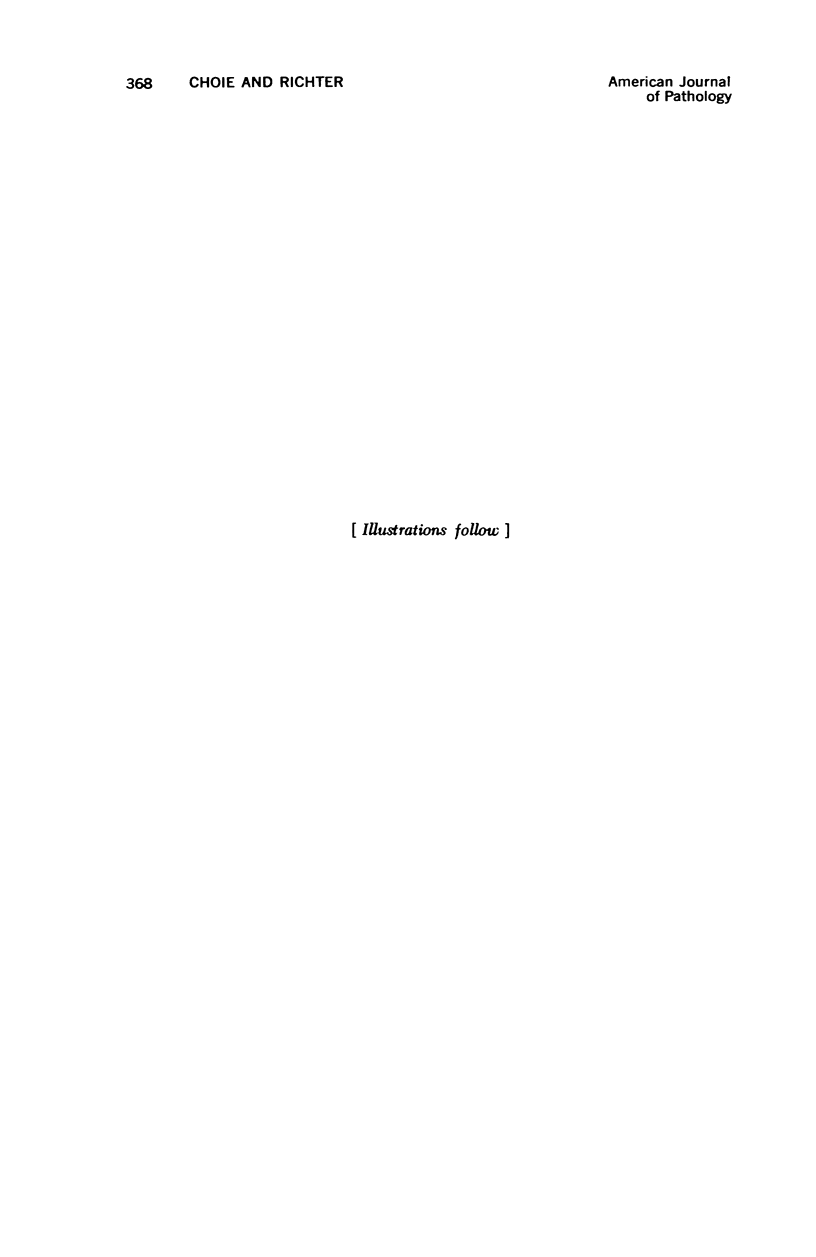


Images in this article
Selected References
These references are in PubMed. This may not be the complete list of references from this article.
- BEAVER D. L. The ultrastructure of the kidney in lead intoxication with particular reference to intranuclear inclusions. Am J Pathol. 1961 Aug;39:195–208. [PMC free article] [PubMed] [Google Scholar]
- BOYLAND E., DUKES C. E., GROVER P. L., MITCHLEY B. C. The induction of renal tumors by feeding lead acetate to rats. Br J Cancer. 1962 Jun;16:283–288. doi: 10.1038/bjc.1962.33. [DOI] [PMC free article] [PubMed] [Google Scholar]
- Baserga R., Wiebel F. The cell cycle of mammalian cells. Int Rev Exp Pathol. 1969;7:1–30. [PubMed] [Google Scholar]
- Becker F. F. Cell function: its importance in chemical carcinogenesis. Fed Proc. 1971 Nov-Dec;30(6):1736–1741. [PubMed] [Google Scholar]
- Choie D. D., Richter G. W. Cell proliferation in rat kidney induced by lead acetate and effects of uninephrectomy on the proliferation. Am J Pathol. 1972 Feb;66(2):265–275. [PMC free article] [PubMed] [Google Scholar]
- GOSS R. J., RANKIN M. Physiological factors affecting compensatory renal hyperplasia in the rat. J Exp Zool. 1960 Dec;145:209–216. doi: 10.1002/jez.1401450304. [DOI] [PubMed] [Google Scholar]
- Goyer R. A., Leonard D. L., Moore J. F., Rhyne B., Krigman M. R. Lead dosage and the role of the intranuclear inclusion body. An experimental study. Arch Environ Health. 1970 Jun;20(6):705–711. doi: 10.1080/00039896.1970.10665647. [DOI] [PubMed] [Google Scholar]
- Johnson H. A., Vera Roman J. M. Compensatory renal enlargement. Hypertrophy versus hyperplasia. Am J Pathol. 1966 Jul;49(1):1–13. [PMC free article] [PubMed] [Google Scholar]
- Richter G. W., Kress Y., Cornwall C. C. Another look at lead inclusion bodies. Am J Pathol. 1968 Aug;53(2):189–217. [PMC free article] [PubMed] [Google Scholar]
- Ryser H. J. Chemical carcinogenesis. N Engl J Med. 1971 Sep 23;285(13):721–734. doi: 10.1056/NEJM197109232851305. [DOI] [PubMed] [Google Scholar]
- Van Esch G. J., Kroes R. The induction of renal tumours by feeding basic lead acetate to mice and hamsters. Br J Cancer. 1969 Dec;23(4):765–771. doi: 10.1038/bjc.1969.95. [DOI] [PMC free article] [PubMed] [Google Scholar]
- Warwick G. P. Effect of the cell cycle on carcinogenesis. Fed Proc. 1971 Nov-Dec;30(6):1760–1765. [PubMed] [Google Scholar]
- ZOLLINGER H. U. Durch chronische Bleivergiftung erzeugte Nierenadenome und -carcinome bei Ratten und ihre Beziehungen zu den entsprechenden Neubildungen des Menschen. Virchows Arch Pathol Anat Physiol Klin Med. 1953;323(6):694–710. doi: 10.1007/BF00956266. [DOI] [PubMed] [Google Scholar]
- van ESCH G., van GENDEREN, VINK H. H. The induction of renal tumours by feeding of basic lead acetate to rats. Br J Cancer. 1962 Jun;16:289–297. doi: 10.1038/bjc.1962.34. [DOI] [PMC free article] [PubMed] [Google Scholar]






